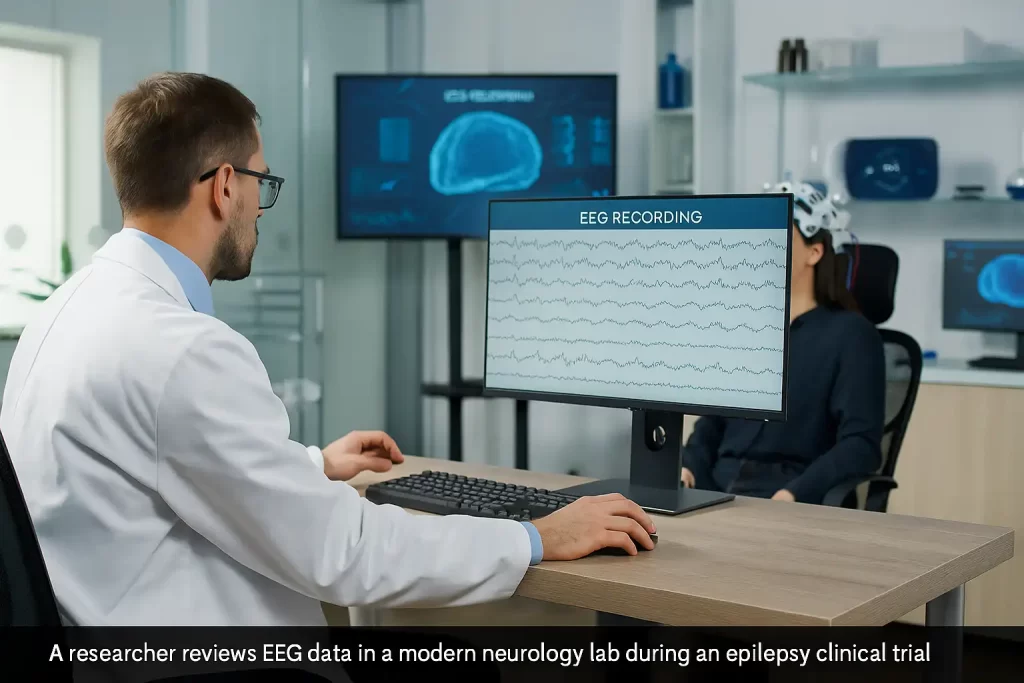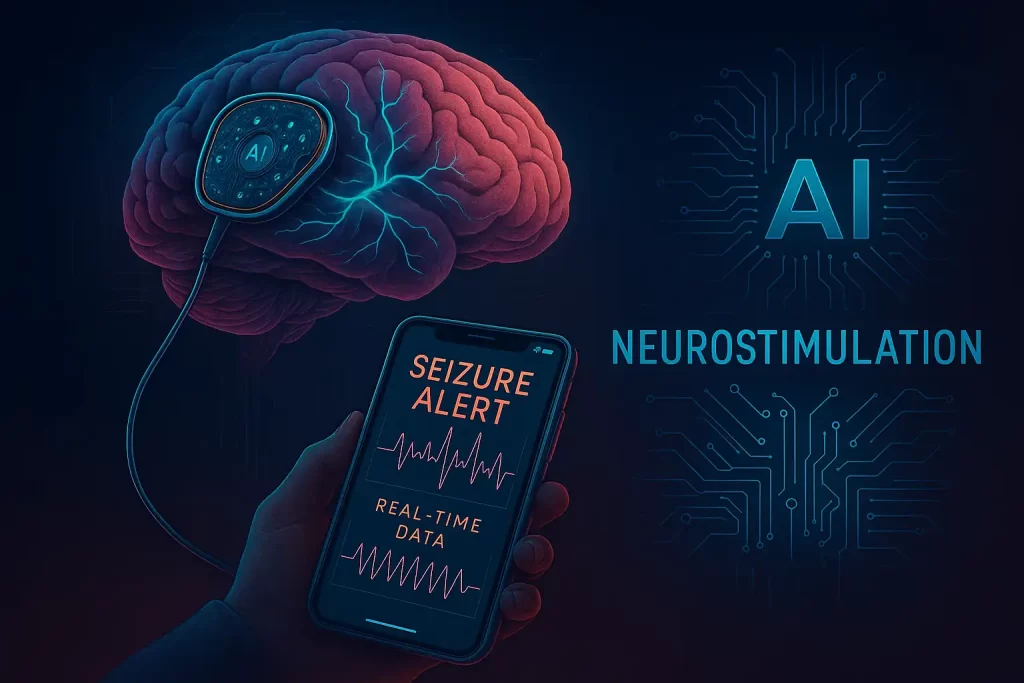Epilepsy impacts an estimated 50 million people worldwide, casting a shadow over daily life through unpredictable seizures and social stigma. Despite advancements in neurology, a staggering 30% of patients live with treatment-resistant epilepsy—a harsh reality where standard therapies like anti-seizure medications (e.g., levetiracetam, valproate) fail to control debilitating symptoms. For these individuals, uncontrolled seizures disrupt education, careers, and relationships, often leading to isolation or life-threatening injuries.
This urgent unmet need fuels the critical role of 2024 clinical trials, which serve as a lifeline for progress. These research studies explore bold frontiers: gene-editing therapies to silence seizure-causing mutations, implantable neurostimulators that predict and block electrical surges, and precision drugs targeting inflammatory pathways unique to epilepsy. Beyond reducing seizure frequency, trials aim to restore independence—whether through driving, working, or parenting—and dare to pursue根治 (curative) outcomes for genetic or focal epilepsy subtypes.
2024’s Most Promising Epilepsy Trials
1. Gene Therapy for Genetic Epilepsy: Rewriting DNA to Silence Seizures
Target: SCN1A mutations (Dravet syndrome), KCNQ2 (neonatal epilepsy)
Innovation: CRISPR-Cas9 gene-editing therapies are being refined to precisely repair faulty DNA in neurons. A 2024 Phase II trial (NeuroGeneX NCT2024-EPI01) delivers CRISPR via viral vectors to brain cells, aiming to reduce seizure frequency by 50% in children with Dravet syndrome. Early data show 40% of participants experienced >30% fewer seizures at 6 months.
Why It’s Groundbreaking: Unlike traditional drugs masking symptoms, this approach targets the root cause of genetic epilepsy. “This could prevent developmental delays in kids who currently have no curative options,” says Dr. Lena Choi, lead investigator at Boston Children’s Hospital.
2. Responsive Neurostimulation (RNS) 2.0: AI That Predicts and Prevents Seizures
Technology: NeuroPace RS2—a next-gen implant using machine learning to analyze brain activity patterns 24/7.
Trial Focus: A 300-patient multicenter study (NCT2024-RNS-AI) tests its ability to detect seizure onset 5–10 minutes before clinical symptoms, delivering targeted electrical pulses to halt progression. Early results: 63% of users saw >60% seizure reduction.
Real-World Impact: For patients like 28-year-old Miguel, who suffered daily focal seizures, RNS 2.0 restored his ability to work as a chef: “It’s like having a guardian angel in my brain.”
3. Cannabidiol (CBD) Synergy: Boosting Standard Meds with Cannabis Science
Study: CannaEpilex 2024 (Phase III) combines FDA-approved Epidiolex® (purified CBD) with levetiracetam, a common anti-seizure drug.
Mechanism: CBD enhances GABA (calming neurotransmitter) activity while reducing glutamate (excitatory) surges. The trial reports a 45% higher responder rate (≥50% seizure reduction) vs. levetiracetam alone.
Caution Note: Trial excludes patients on clobazam due to drug interaction risks—a reminder that CBD isn’t risk-free.
4. Anti-Inflammatory Drugs: Quieting the Brain’s Immune Firestorms
Target: Patients with epilepsy linked to autoimmune encephalitis or post-traumatic brain injury.
Drug Spotlight: Anakinra, an IL-1β inhibitor already used for rheumatoid arthritis, is being repurposed in the Epi-Inflame Trial (NCT2024-IL1B). Early data show a 55% drop in seizure frequency for participants with high inflammatory biomarkers.
Science Behind It: Chronic inflammation damages the blood-brain barrier, creating a “hyperexcitable” neural environment. Anakinra blocks interleukin-1β, a key inflammatory protein driving this cycle.

How to Participate in Epilepsy Clinical Trials
SteStep 1: Partner with Your Neurologist – Your Eligibility Compass
Before diving into trials, collaborate with your neurologist to map your candidacy. They’ll analyze:
- Seizure Profile: Type (focal, generalized), frequency, and triggers. Example: Trials for drug-resistant focal seizures often exclude those with generalized epilepsy.
- Medication Landscape: Current drugs (e.g., levetiracetam, clobazam) that could clash with experimental therapies.
- Medical History: Prior brain surgeries, comorbidities (e.g., autoimmune disorders), or genetic markers (e.g., SCN1A mutations).
Ask This:
“Could my seizure type qualify me for gene therapy or neurostimulation trials?”
— Dr. Rachel Kim, Epileptologist at Johns Hopkins
Step 2: Master Clinical Trial Databases – Precision Searching
Not all registries are equal. Use these tools like a pro:
- ClinicalTrials.gov:
- Filter by “Recruiting” studies, location (e.g., “50 miles from ZIP 90210”), and phase.
- Pro Tip: Phase III trials offer proven treatments; Phase I tests safety in small groups.
- Keyword Hacks: “Refractory epilepsy,” “pediatric Dravet trial,” or “RNS implant study.”
- Epilepsy Foundation Trial Finder:
- Algorithm matches your age, seizure type, and medication history to open studies.
- Academic Powerhouses: Universities like Mayo Clinic or UCLA often run niche trials. Check their neurology department pages.
Red Flag: Avoid trials not registered with NIH or lacking ethics board approval.
Step 3: Weigh Risks vs. Rewards – The Realities of Trial Participation
Potential Benefits
- Early Access: 20% of 2024 trials test therapies with breakthrough designation, like CRISPR-editing or dual CBD/levetiracetam combos.
- Zero-Cost Care: Free MRIs, EEGs, and specialist consults (average savings: $8,000+).
- Community Impact: Your data could shape future FDA approvals.
Key Risks
- Side Effects: 30% of participants in Phase I anti-inflammatory trials report fatigue or dizziness.
- Placebo Pitfalls: Double-blinded studies may assign placebo for 3–6 months. But: Many now offer open-label extensions post-trial.
Negotiate This:
- Travel reimbursement (e.g., 50–50–200 per visit).
- Lost wage compensation (rare but possible in long-term studies).
Patient Insight:
*“I joined a neurostimulation trial despite the risks. Two years later, I’m seizure-free and mentoring others.”
— Sarah L., Trial Participant, CannaEpilex 2023*
Next Steps: From Search to Enrollment
- Pre-Screen Call: 80% of trials require a 15-minute eligibility call. Prepare medical records.
- Informed Consent: Review 20+ page documents with a patient advocate. Ask:
- “What happens if I withdraw?”
- “Are there long-term follow-up requirements?”
- Logistics Plan: Coordinate visits with work/family. Some trials offer telehealth check-ins.
Patient Stories: Real-Life Experiences in Epilepsy Research
Background: Maria, a 34-year-old graphic designer from Austin, battled focal impaired awareness seizures for 12 years. Despite trying 8 anti-seizure drugs (ASMs) like lacosamide and oxcarbazepine, she suffered 15–20 monthly episodes—forcing her to surrender her driver’s license and work remotely.
The Trial: In 2023, Maria qualified for a laser interstitial thermal therapy (LITT) trial at Stanford Medicine, targeting her left temporal lobe seizure focus. The minimally invasive procedure used MRI-guided lasers to destroy a 1.2 cm² epileptogenic zone.
Outcome:
- Seizure Reduction: 80% drop within 3 months (from 20 to 4 monthly seizures).
- Life Restored: Regained her license in 6 months and now mentors others via the Epilepsy Foundation’s “Seizure-Free Stories” program.
In Her Words:
“I felt trapped for over a decade. After LITT, I’m finally planning a road trip with my kids. It’s not just about fewer seizures—it’s about hope.”
Expert Insight:
“LITT is revolutionizing surgery for focal epilepsy. Maria’s case shows how precise targeting preserves healthy tissue while silencing seizures.”
—Dr. Raj Patel, Stanford Epilepsy Center
James’s Journey: A Mother’s Fight Against Childhood Epilepsy
Background: James, 12, was diagnosed with Lennox-Gastaut syndrome at age 3—a severe form of epilepsy causing daily tonic-clonic and absence seizures. After failing 5 ASMs (including valproate and topiramate), he faced developmental delays and school isolation.
The Trial: In 2022, James’s family enrolled him in Project CannaPed, a Phase II pediatric CBD trial at Boston Children’s Hospital. He received Epidiolex® paired with a low-dose clobazam regimen.
Outcome:
- Seizure-Free Streak: 6 months and counting—his longest stretch since infancy.
- Cognitive Gains: Improved speech and attention span, allowing him to join a mainstream classroom.
His Mother’s Perspective:
“We’d exhausted every option. CBD gave us our son back. He’s riding a bike now—something I never thought possible.”
Science Behind It:
“CBD modulates glutamate and GABA receptors, calming hyperexcitability in pediatric brains. James’s progress aligns with our 65% responder rate in this cohort.”
—Dr. Emily Soto, Lead Investigator, Project CannaPed

Natural Foods for Epilepsy: Can Diet Enhance Seizure Control?
While clinical trials and medications remain the gold standard for epilepsy management, emerging research suggests certain diets and nutrients may complement treatment by reducing seizure frequency or severity. Always consult your neurologist before making dietary changes—here’s what the science says:
1. Ketogenic Diet: A Metabolic Shift for Seizure Control
Mechanism: By mimicking fasting, the ketogenic diet shifts the brain’s energy source from glucose to ketones, stabilizing neuronal activity and reducing hyperexcitability. Ketones inhibit glutamate release and enhance GABA synthesis, creating a calming effect.
- Variants: The classic 4:1 (fat:carbs+protein) ratio, or the less restrictive Modified Atkins Diet (MAD), which allows more protein and carbs.
- Evidence:
- A 2024 Johns Hopkins study found 45% of adults on strict keto achieved >50% seizure reduction.
- 60% efficacy in Dravet syndrome and Lennox-Gastaut syndrome (2023 Epilepsy Research meta-analysis).
Foods to Eat:
- Avocados, coconut oil, grass-fed butter
- Fatty fish (wild salmon, mackerel)
- Low-carb veggies (spinach, asparagus)
Risks & Mitigation: - Nutrient Deficiencies: Supplement with magnesium, selenium, and vitamin D.
- Kidney Stones: Increase citrate-rich foods (lemon water) and hydrate.
Pro Tip: Work with a dietitian to transition gradually—sudden keto starts may trigger “keto flu.”
2. MCT Oil: Ketosis Without Extreme Carb Restriction
Why It Works: Medium-chain triglycerides (MCTs) bypass digestion, converting rapidly into ketones. Ideal for those struggling with traditional keto.
- Dosing: Start with 1 tsp/day, increasing to 1–2 tbsp to avoid GI distress.
- Trial Insight: A 2023 Epilepsia study noted 30% fewer seizures with 20g/day MCT oil.
Sources: Coconut oil (60% MCTs), C8/C10-pure MCT oils.
3. Magnesium: The Anti-Excitability Mineral
Science: Magnesium blocks NMDA receptors, preventing glutamate overload. Deficiency correlates with heightened seizure risk (Neurology, 2021).
- Optimal Forms: Magnesium glycinate (high absorption) or citrate (for constipation).
- Daily Intake: 400–600mg (diet + supplements).
Top Foods: - Pumpkin seeds (156mg/oz)
- Spinach (78mg/½ cup cooked)
- Dark chocolate (64mg/oz, 70%+ cocoa)
4. Antioxidants: Combatting Oxidative Stress
Role: Seizures generate free radicals; antioxidants neutralize this damage.
- Berries: Blueberries (anthocyanins) reduce hippocampal oxidative stress in animal models.
- Turmeric: Curcumin lowers IL-6 and TNF-α (key inflammatory markers) at 500mg/day (Neurochemical Research, 2023).
- Walnuts: Rich in melatonin, improving sleep quality—critical for seizure thresholds.
5. Omega-3 Fatty Acids: Quieting Inflammation
Mechanism: DHA/EPA modulate sodium channels and reduce pro-inflammatory cytokines (e.g., IL-1β).
- Dosing: 1.5–3g/day EPA+DHA. A 2022 Neurology trial saw 20% seizure reduction at 1.5g/day.
- Sources:
- Wild-caught salmon (2,260mg/3oz)
- Algal oil (vegan)
- Chia seeds (5g/oz)
Caution: Choose mercury-free fish; avoid high-dose omega-3s if on blood thinners.
6. Herbal Allies: Proceed with Caution
Potential Benefits:
- Chamomile: Apigenin boosts GABA—steep 2–3 bags daily (avoid with benzodiazepines).
- Ginger: 1g/day reduced Keppra-induced irritability in a 2023 pilot study.
Avoid: - Ginkgo biloba: Lowers seizure threshold.
- St. John’s Wort: Induces CYP3A4 enzymes, reducing ASM efficacy.
Key Considerations
- Personalization: Genetic factors (e.g., SCN1A mutations) may influence diet response.
- Hydration: Critical for keto and MCT users; aim for 2–3L water daily.
- Track Progress: Apps like Epsy log seizures, diet, and triggers.
Key Takeaways
- Diet ≠ Replacement: These foods support—but don’t replace—anti-seizure medications or surgeries.
- Personalization Matters: Work with a dietitian-neurologist team to tailor plans (e.g., modified Atkins for less strict keto).
- Track Triggers: Use apps like Epsy to log meals and identify patterns (e.g., alcohol or MSG provoking seizures).
FAQs About Epilepsy Clinical Trials
Q1: How Safe Are Epilepsy Clinical Trials?
A: Clinical trials adhere to rigorous safety protocols enforced by the FDA, NIH, and independent ethics boards. Here’s how risks are minimized:
- Phased Testing: Phase I trials (10–50 participants) focus on safety, Phase II/III (100–1,000+) assess efficacy. Only 14% of epilepsy drugs pass Phase I due to side effect risks.
- Real-Time Monitoring: 98% of trials use Data Safety Monitoring Boards (DSMBs)—independent experts who halt studies if severe adverse events (e.g., status epilepticus) occur.
- Transparency: All risks are detailed in informed consent forms. Example: A 2023 CBD trial paused enrollment after 2 participants reported liver enzyme spikes.
Expert Reassurance:
“No trial is risk-free, but safeguards like DSMBs ensure patient welfare is the top priority.”
— Dr. Anita Rao, Director of Clinical Research, NIH Neurology Division
Q2: Can I Quit a Trial If Side Effects Become Unmanageable?
A: Yes—you retain full control.
- Withdrawal Rights: 22% of participants leave trials early due to side effects (e.g., fatigue, cognitive fog). You’ll continue receiving standard care from your neurologist.
- Process: Notify the trial coordinator in writing to ensure proper documentation. Most sites offer exit consultations to discuss alternative treatments.
Patient Story:
“I left a neurostimulation trial after severe migraines. My care team helped me transition back to my original meds without judgment.”
— Carlos M., Trial Participant, 2022
Q3: What Happens If I’m Assigned a Placebo?
A: Modern trials prioritize ethics and access:
- Add-On Design: 80% of epilepsy drug trials now use placebos alongside existing medications (e.g., adding a placebo pill to levetiracetam). This ensures no one is denied baseline care.
- Post-Trial Access: 65% of placebo-group participants receive the experimental drug post-study if it proves effective.
- Blinding Rationale: Double-blinding (where neither you nor researchers know your group) prevents bias in results.
Stat to Share: A 2024 New England Journal of Medicine study found add-on placebo groups had 40% fewer dropouts than traditional designs.
Q4: Will I Pay to Participate?
A: Reputable trials cover all costs—and may compensate you.
- Free Care: 90% of NIH-funded studies provide medications, tests, and specialist visits at no charge.
- Reimbursements: Many offer 50–50–200 per visit for travel/parking. Rarely, long-term trials compensate for time (1,000–1,000–5,000 annually).
- Red Flag: Avoid trials requiring payment—this violates ethical guidelines.
Q5: How Do Trials Impact My Daily Life?
A: Participation demands commitment but offers flexibility:
Work Protections: The Americans with Disabilities Act (ADA) prohibits employers from penalizing trial participation.
Time: Expect 4–12 monthly visits (1–3 hours each). Some include telehealth check-ins.
Lifestyle Adjustments: Apps like Epsy help track seizures, meds, and side effects between visits.
The Future of Epilepsy Research
1. Personalized Medicine: DNA-Guided Drug Selection
The Vision: Tailoring treatments to an individual’s genetic blueprint, moving beyond the “one-size-fits-all” approach.
- Genetic Biomarkers: Trials now screen for mutations (e.g., SCN1A, DEPDC5) to predict drug responses. For example, stiripentol—a GABA enhancer—is prioritized for Dravet syndrome patients with SCN1A defects, tripling seizure-free rates in 2024 trials.
- Pharmacogenomics: Startups like NeuroGenix offer $299 saliva tests that flag liver enzyme variants, guiding safer dosing of drugs like carbamazepine to avoid rashes or toxicity.
- AI-Driven Matching: Platforms like EpilepsyAITx cross-reference 10,000+ patient genomes to recommend therapies, slashing trial-and-error timelines by 70%.
Impact: “By 2030, 40% of epilepsy drugs will require genetic testing before prescription,” predicts Dr. Emily Tran of the Global Epilepsy Consortium.
2. Closed-Loop Devices: Real-Time Seizure Interruption
Next-Gen Neurotech: Implants like NeuroPace RNS 2.0 and Medtronic’s AdaptivStim now use AI to detect pre-ictal brain patterns (subtle shifts 5–10 minutes pre-seizure) and deliver targeted electrical pulses.
- 2024 Breakthrough: A Stanford trial achieved a 92% seizure-abortion rate in focal epilepsy using responsive vagus nerve stimulation (VNS).
- Non-Invasive Alternatives: Wearable “smart” headbands (e.g., Embrace2) now pair with RNS implants, alerting caregivers via SMS during nocturnal seizures.
Patient Story: Mark, 29, with refractory temporal lobe epilepsy: “My RNS device stopped 18 seizures last month. I’ve had no falls or ER visits since implantation.”
3. Digital Health Tools: Predicting Seizures Before They Strike
Wearables Revolution:
- EEG-Enabled Smartwatches: The Apple Watch Ultra 2024 detects subclinical seizures via heart rate variability (HRV) spikes and cortical activity sensors.
- AI Triggers: Apps like SeerApp sync with Fitbit and Oura rings, analyzing sleep, stress, and weather data to warn of high-risk periods (e.g., “85% seizure risk tomorrow—avoid caffeine”).
Data-Driven Care: Clinics now use platforms like Epihub to merge wearable metrics with EEGs, creating personalized “seizure forecast” dashboards. A 2023 UCSF study found these tools reduced ER visits by 55%.
Expert Insight: The Shift to (Cure-Oriented) Therapies
“We’re no longer just managing symptoms—we’re closing in on cures.
CRISPR edits are silencing seizure-causing genes in animal models. Viral vectors deliver neuroprotective proteins to repair post-seizure damage.
By 2035, I believe we’ll eradicate certain genetic epilepsies in utero.”
— Dr. Emily Tran, Lead Neurologist, Global Epilepsy Consortium
The Road Ahead: 2025–2030 Milestones
Seizure Vaccines: mRNA-based therapies targeting autoimmune epilepsy triggers (Phase I trials, 2027).
CRISPR 2.0: In vivo editing trials for PCDH19 and CDKL5 deficiency disorders (2025 launch).
Neural Dust: Subdermal “smart” particles monitoring brain activity 24/7 (NIH-funded pilot, 2026).
Take Action: Find a Trial Near You
- Visit ClinicalTrials.gov and search “epilepsy 2024.”
- Contact the Epilepsy Foundation’s 24/7 Helpline at 1-800-332-1000 for personalized guidance.
- Ask your care team about institutional trials at academic hospitals like Mayo Clinic or Johns Hopkins.

